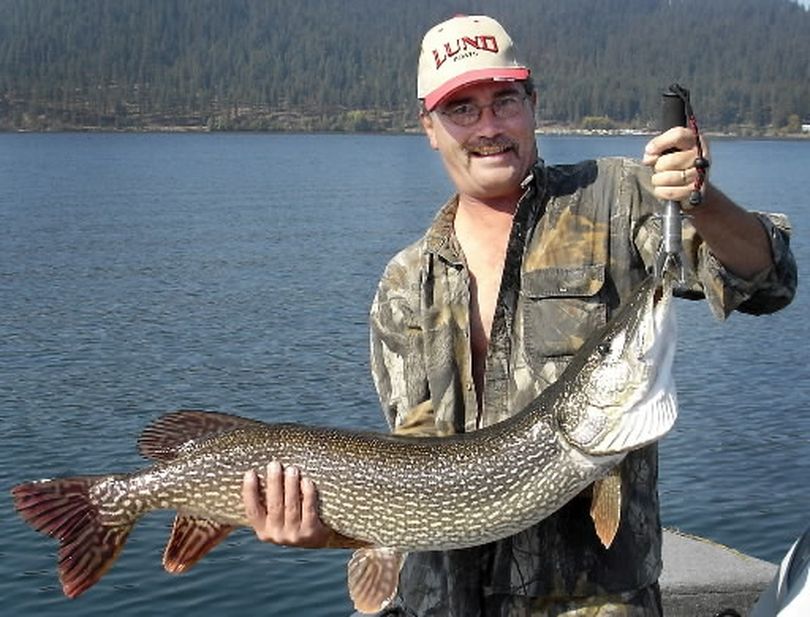Research gillnets target northern pike at south end of Lake Coeur d’Alene

FISHING -- Gillnets are out in the south end of Lake Coeur d'Alene this week as fisheries biologists begin another season of a multi-year project targeting northern pike in order to improve survival of spawning cutthroat trout.
The Coeur d’Alene Tribe and Idaho Department of Fish and Game are removing northern pike from Windy Bay while cutthroat trout are migrating. The goal is to reduce the occurrence of northern pike preying on the trout before they have a chance to spawn in Lake Creek, which enters the lake in Windy Bay.
As in the previous two years, pike in Windy Bay are being caught with gillnets. The pike are transported northward on the lake to Cougar Bay and released where pike are less likely to prey on native cutthroat trout. The pike also are more readily available to anglers at Cougar Bay, the tribe says in a media release.
“The idea is to reduce the threat to cutthroat trout, while creating more opportunities for anglers to fish for and catch pike in other parts of the lake,” said Andy Dux, Regional Fishery Manager for IDFG. Both the Tribal and Idaho fishery management plans place a priority on cutthroat trout conservation."
During net sampling, biologists will try to determine if pike previously tagged and released in Cougar Bay have returned to Windy Bay.
"The hope is that the pike have remained on the north end of the lake where fishing pressure is high," the tribe says. "At the end of the three-year project, the findings will help to determine if this strategy can be used to reduce the predation threat on cutthroat trout in Windy Bay into the future."
In 2015, netting teams captured 311 northern pike in Windy Bay over a seven-week period.
In 2016, they removed 161 using the same methods.
“It’s gotten much more difficult to catch pike in Windy Bay, so this leads us to believe that the vast majority of pike in the bay have been removed,” said Angelo Vitale, Fisheries Program Manager for the Coeur d’Alene Tribe.
Since the project started, about 74 percent of the captured fish survived the netting and were tagged and transported to Cougar Bay. By-catch of other fishes, including cutthroat trout, has been minimal, the tribe reports.
Based on tag returns, biologists estimate anglers harvested 34 percent of the relocated pike in 2015 and 17 percent of them in 2016.
Most of the fish were caught near Cougar Bay and less than 1 percent have been documented moving back to Windy Bay, the tribe says.
Monitoring is underway on the cutthroats returning to spawn in Lake Creek to see if their numbers increase in the wake of pike removal.
In recent years, cutthroat numbers in Lake Creek have averaged around 300 spawning adults and as many as 8,000 juveniles that move between the stream and lake each year, the tribe says.
Here's more from the release:
Background: Historically, native westslope cutthroat trout were abundant in Lake Creek where many would live as juveniles and then migrate to the lake, where they grew to maturity before returning to the stream as adults to spawn.
A variety of factors, including degraded stream habitat and predation by introduced species in the lake, resulted in a decline in the Lake Creek cutthroat trout population. The Tribe has implemented extensive habitat restoration actions in Lake Creek, improving stream habitat and increasing the number of cutthroat trout that the stream can support.
However, the population is still limited by poor survival within Coeur d’Alene Lake. Estimates indicate that only about 2% of juvenile cutthroat that migrate from Lake Creek to the lake will survive and return as adults. One of the reasons for the poor survival is predation by northern pike, particularly during spring when adult cutthroat swim through Windy Bay on their way to spawn in Lake Creek. Windy Bay provides spawning habitat for northern pike and cutthroat trout are an easy food source in the bay during their spring migration.
